Long winter evenings can tempt a thirst like no other time of year. We’ll hark a beer garden’s call at the briefest suggestion of sunlight, but a spike in drink driving cases has also been known to follow. According to data collected by the road safety organisation Brake, December was a close second in producing drink drive incidents between 2012 and 2019, just behind August.
The simplest advice we can offer is that, if you plan on drinking alcohol, don’t drive. At all. The point at which you’re safe to drive after drinking varies from person to person – it depends on factors such as your alcohol tolerance, weight, metabolism, sex and how much you’ve consumed. As such, it’s impossible to provide a definitive answer on when you can drive after drinking.
However, the government has issued guidance on drink driving, and there are lots of online calculators that can provide an estimate of your blood alcohol level that help you gauge when you’re safe to get back behind the wheel. If you prefer a belt-and-braces approach, you can also buy an off-the-shelf breathalyser kit to measure your alcohol levels as the police would at the roadside.
The Department for Transport reports there were around 300 deaths on Britain’s roads in 2022 in collisions where a motorist was over the drink drive limit. That figure is the highest recorded since 2009, despite increased campaigns, increased enforcement efforts and the lower limit in Scotland.
What is the UK drink drive limit?
That depends on where you are. The drink drive limit in England, Wales and Northern Ireland is 35 micrograms of alcohol per 100 millilitres of breath. Scotland has a far stricter attitude towards drinking and driving. Since 2014, the limit there has been 22 micrograms of alcohol per 100 millilitres of breath.
The penalties for drinking and driving are severe. Driving or attempting to drive while over the limit can result in a six-month prison sentence, an unlimited fine and a driving ban for at least one year (or three years if you’re convicted twice within a 10-year period).
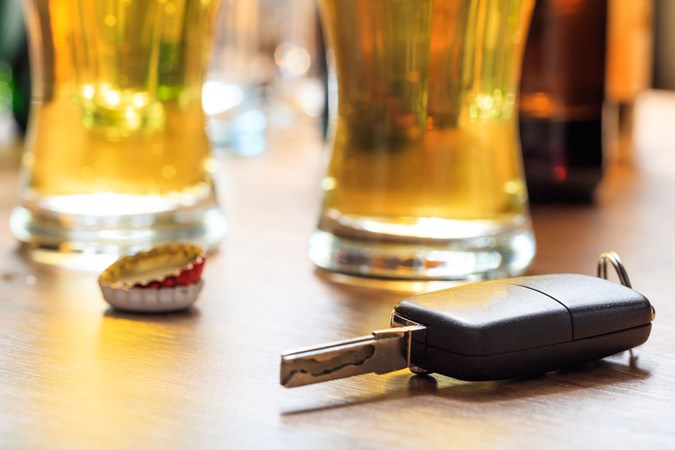
These days, though, there isn’t any excuse for drinking and driving, especially if you’re a beer lover. The number of low and non-alcoholic drinks on the market has increased tenfold – and there’s a product out there to suit every taste, from non-alcoholic craft beer to alcohol-free tequila.
How many units of alcohol can you drink and drive?
The legal drink drive limit cannot be precisely converted into a specific number of units. That’s because the limit is a measurement of the concentration of alcohol in your body – and that concentration changes depending on your shape and size.
In simple terms, two pints of standard strength beer (which equates to around four units, or the postulated maximum number of units male drivers can drink and still be safe to drive) will impair a 60kg person’s ability to drive more than it will a 90kg person because the concentration of alcohol in the lighter person’s system will be higher in relation to their body mass.
How long does it take for alcohol to wear off?
According to healthline.com, alcohol can remain in your urine for up 12 hours, on your breath for 24 hours and in your hair for 90 days. The only way to remove alcohol from your system is to wait for your body to metabolise it – and this process can’t be accelerated by sleeping.
There are a few calculators on the internet that use the Widmark Formula to gauge how soon you can drive after drinking. The formula states that a person’s blood alcohol content is equal to the grams of alcohol consumed, multiplied by 3.75 for women and 4.7 for men, then divided by the person’s weight in grams.
This formula is a little meaningless in isolation, so let’s plumb some practical figures into it. A 70kg woman who drank four glasses of 12% wine would take around 10 hours until she was alcohol free. It would take an 83kg man who drank four pints of 4% lager around 11 hours to reach the same state.
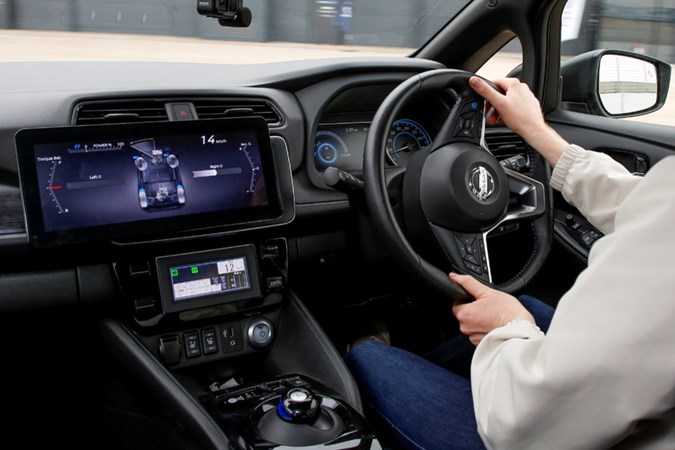
Naturally, this method doesn’t take an individual’s metabolic rate or sensitivity to alcohol into account, but it works as a good yardstick, especially for those concerned about driving the day after drinking.
Policy and research director of IAM RoadSmart, Neil Greig, said: ‘The police use a combination of public reports, intelligence on repeat offenders and traffic policing to catch anyone who risks taking a drink and getting behind the wheel. This includes the ‘morning after’ which is now a key target area for nearly all police forces as part for their anti-drink drive enforcement campaigns.’
Our own testing: breathalyser kits
We dispatched Murray Scullion to the pub to conduct some field research on blood alcohol concentration. That sounds like a fancy way of saying he had a company-sanctioned booze up, but there was a dash of science involved. Our test was compiled by a toxicologist and carried out on a commercially available breathalyser kit.
The test consisted of drinking three pints over three hours, measuring blood alcohol levels before, during and after, and seeing if the recommended ‘time until sober’ from the breathalyser was accurate. We were also interested to learn whether the breathalyser readings were close to the morning after calculators that only considered a person’s weight and sex.
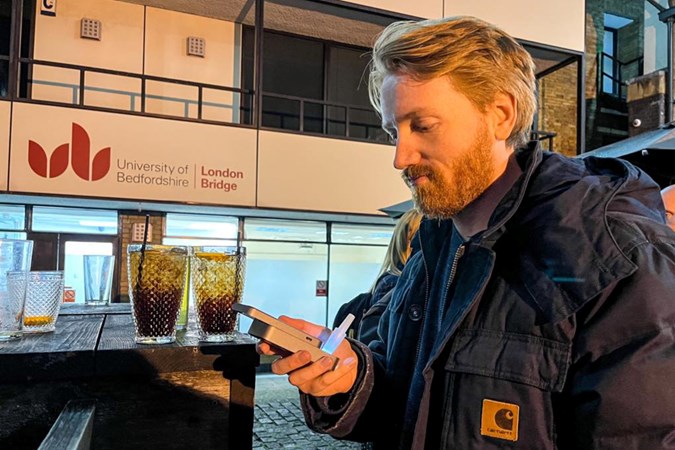
Murray drank three pints of 4.3% lager – Beavertown Neck Oil, if you’ must know’re interested. The morning after calculators predicted it would take around eight hours for him (as a 73kg man) to be completely sober.
When he’d drunk three pints (and waited 30 minutes as per the breathalyser’s instructions) his blood alcohol level was 95 micrograms per 100 millilitres. As another hour went by his levels decreased to 61 micrograms per 100 millilitres, and he fully sobered up within 6 hours and 15 minutes – a good 1 hour and 45 minutes before the calculator suggested he would be sober. It was spot on from when the breathalyser predicted he would be though.
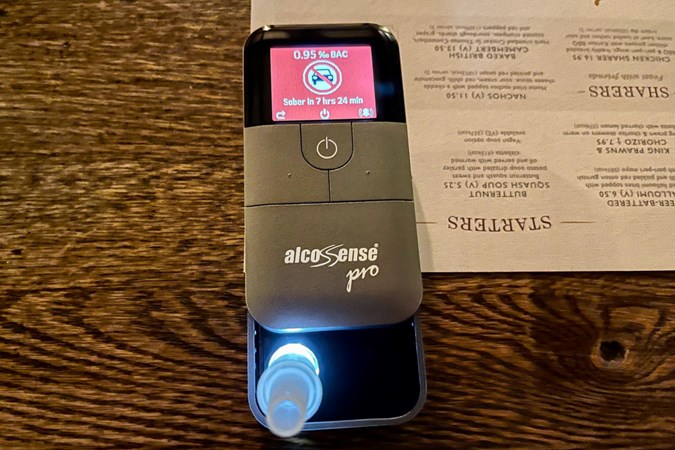
Of course, the online calculators can’t consider your metabolism and sensitivity to alcohol. Our methods weren’t exactly scientifically rigorous, either. However, our test does at least show the disparity between sources and how differently each person processes alcohol.
What are the police doing about drink drive offenders?
We contacted our local law enforcement service, Lincolnshire Police, for some data on drink drive offences in the region. Since 2018, around 40 people every year have been killed or seriously injured in the county in car accidents involving a drunk (or drugged) driver – and there were almost 100 minor drink drive collisions in 2022 alone.
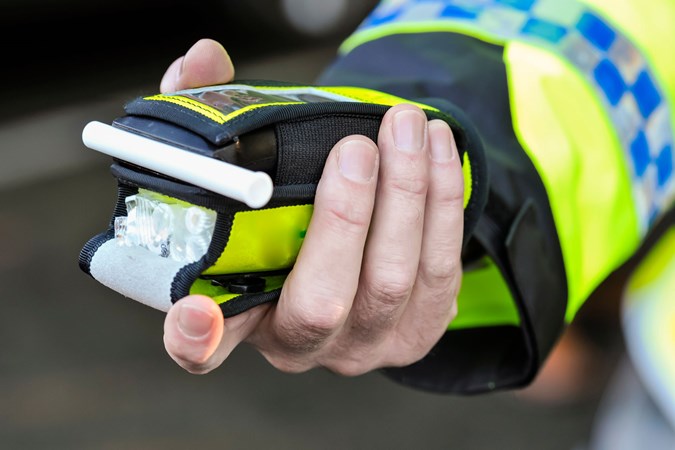
In December 2023, Lincolnshire Police launched its Christmas drink and drug drive campaign. Called Operation Limit 2, the force carried out extra patrols and set up checkpoints at key locations for drug and alcohol testing. Inspector Jason Baxter of the Roads Policing Unit said: ‘We can’t be everywhere, but we could be anywhere. That’s the message we want to get across to every driver on Lincolnshire’s roads.’
When can I drive after drinking?
The truth is that there’s no definitive answer to this question, unless you’re prepared to give your body time to completely metabolise the alcohol. The best advice we can offer is to avoid drinking and driving altogether.
Using a calculator is a good shout when the ‘morning after’ question comes into play and, if you really must drive sooner than that, utilising a breathalyser is an even more accurate way of checking.
We wouldn’t recommend risking it, though. IAM RoadSmart estimates that the combined financial penalty of drink-driving could be as high as £70,000 or more once you’ve compiled the fines, legal fees, higher car insurance premiums, alternative transport costs and potential loss of earnings following a drink-drive conviction. Why spend that much when you could just put down the glass?
Does food soak up alcohol?
It’s been a notion widely held since the two were first consumed in glorious tandem, but the soaking up part doesn’t really hold water. That sort of phraseology conjures up visions of bread mopping up the contents of a crisp balsamic/olive oil dip, but in reality, food merely slows down the absorption process of alcohol into your system.
Alcohol takes longer to be transferred into the intestine when food is in your stomach, and so the enzymes of your stomach lining have longer to inactivate the alcohol, meaning less reaches your liver and eventually your bloodstream.
In short, food consumption – particularly fatty foods – can have a significant effect on how inebriated you get, but its consequence will vary from person to person, and so it should never be relied upon to sober you up to drive if you’ve had too much to drink.
Just so you know, we may receive a commission or other compensation from the links on this website - read why you should trust us.







